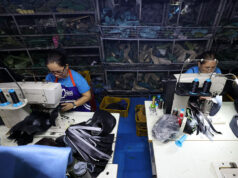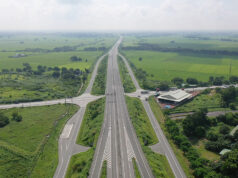BoI hoping to steer garments industry away from fast fashion
THE government’s plan to revive the garments industry will take producers away from fast fashion, where the country’s costs are uncompetitive, and into higher value-added activities and niches that involve more upcycling.
Ma. Corazon Halili-Dichosa, Board of Investments (BoI) executive director of industry development services, said that the agency plans to “support not only the indigenous textile and garment production but also producers involved in (the practice) of upcycling.”
“Given the lower cost of production in other countries in the region, it has become difficult to compete (in) fast fashion… so BoI is essentially looking at niche segments where the country can take a larger role in the industry,” Ms. Halili-Dichosa told reporters in a news conference Wednesday.
Fast fashion depends on short time to market, interpreting high-fashion garments recently debuting on runways into more mass market-friendly versions. Upcycling is the environmentally-sustainable practice of repurposing materials to products of higher quality than originally intended.
Ms. Halili-Dichosa said upcycling cuts costs and adds value to garments by using by-products, scraps, or unwanted textiles, while also making the industry more sustainable.
Fast fashion has been identified as having high environmental costs because it makes the rapid replacement of garments at the next fashion cycle easier due to the discarded items of clothing being purchased cheaply, thereby becoming less valued by users.
The BoI also called for the upgrading of design content to allow the industry to “move away from the simpler business models and improve value addition.”
According to the Philippine Statistics Authority, garment exports fell 7% year-on-year in the nine months to September.
According to the World Trade Organization Vietnam was the largest garments exporter in Southeast Asia in 2018 with $8.1 billion, followed by Indonesia ($4 billion), Thailand ($3.7 billion), Malaysia ($1.9 billion), Singapore ($706 million), and Cambodia ($220 million).
The Philippines, on the other hand, was lagging at $200 million, ahead of Myanmar ($106 million), Laos ($5 million), and Brunei ($1 million).
BoI’s Ms. Halili-Dichosa said that the agency has yet to publish its road map for the garments and textile industry, which was initially set to come out last year.
Andrew Kay, managing director of CP Exhibition Ltd., said at the same news conference that the global market does not view the Philippines as a good supplier of garments and textiles, judging by the decision of Chinese manufacturers to set up production elsewhere in the region amid the ongoing trade war with the US.
“I think many Chinese garments (manufacturers) need to move to other countries and Vietnam is, of course, one of their first choices,” Mr. Kay said, adding that Vietnam has cheaper manpower and electricity costs.
CP Exhibition organizes the upcoming Philippine Garment Leather Industries and Textile Expo that will be held from Dec. 5 to 8 at the SMX Convention Center in Pasay City. — G. L. Espedido



